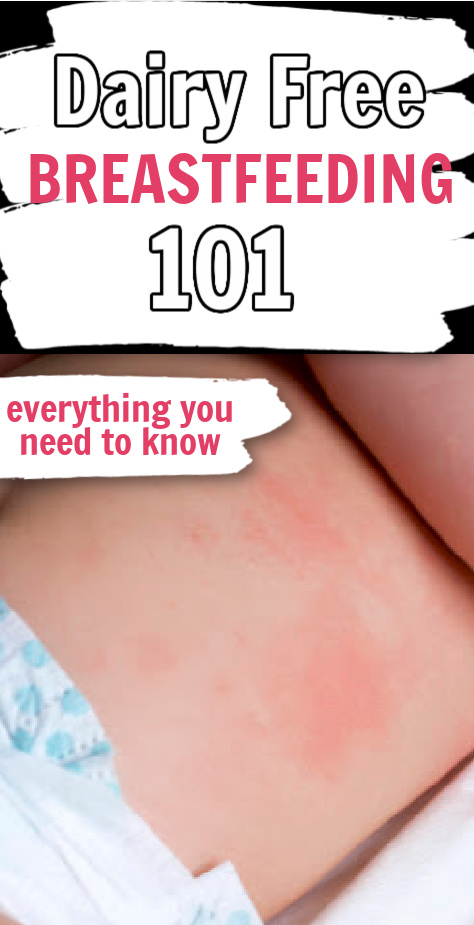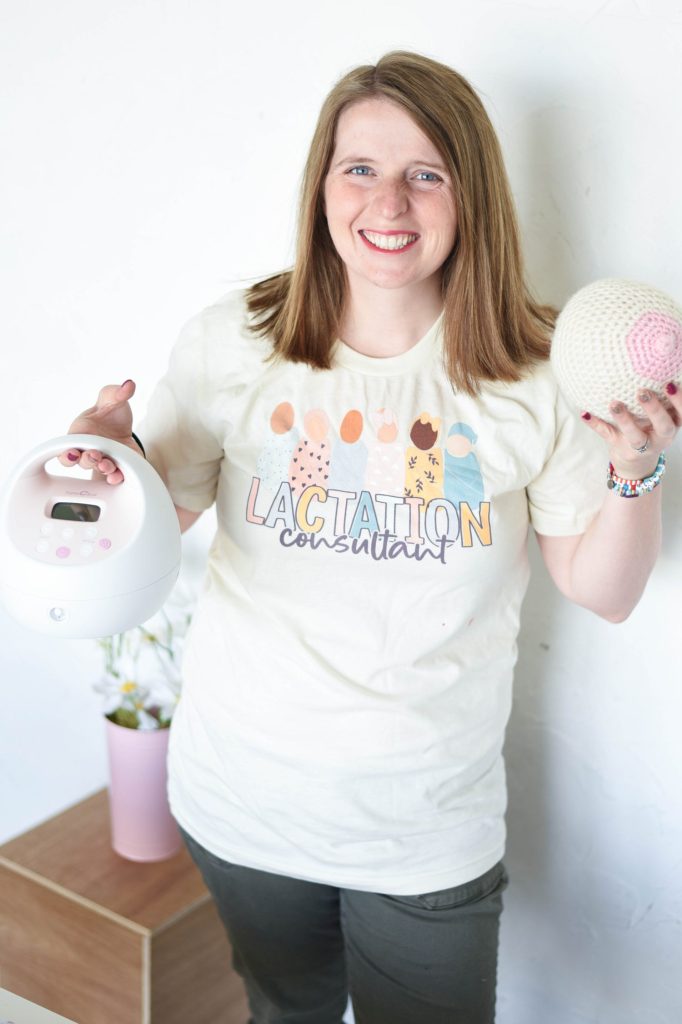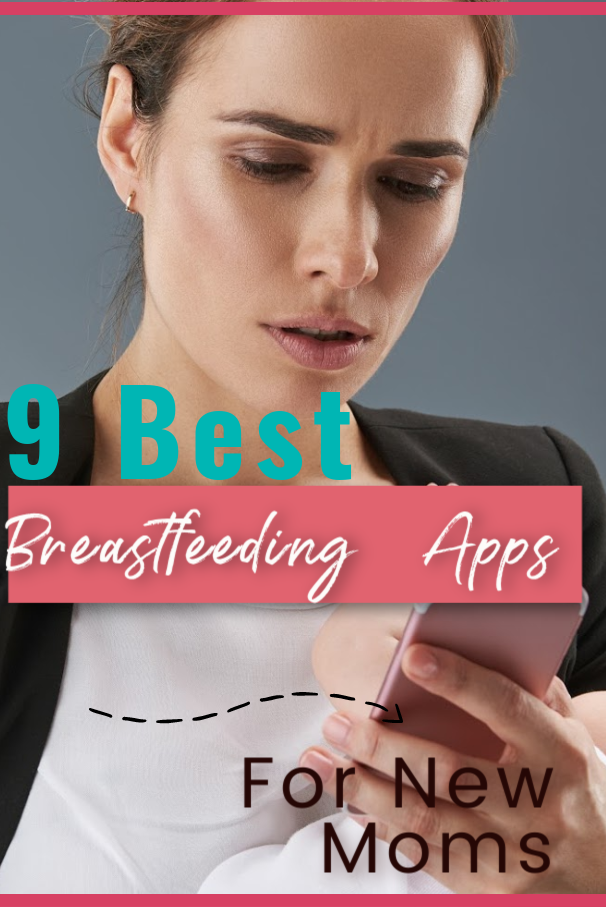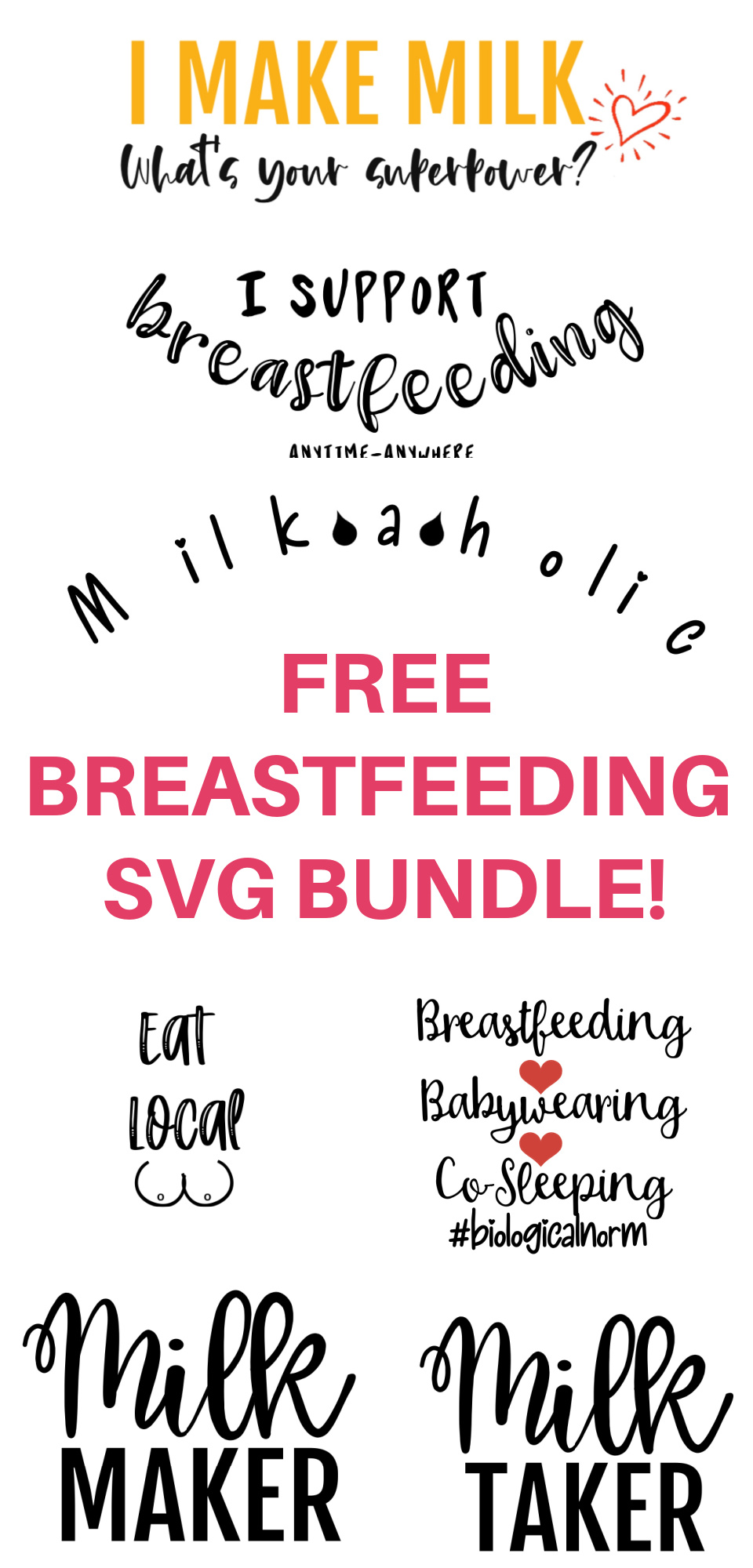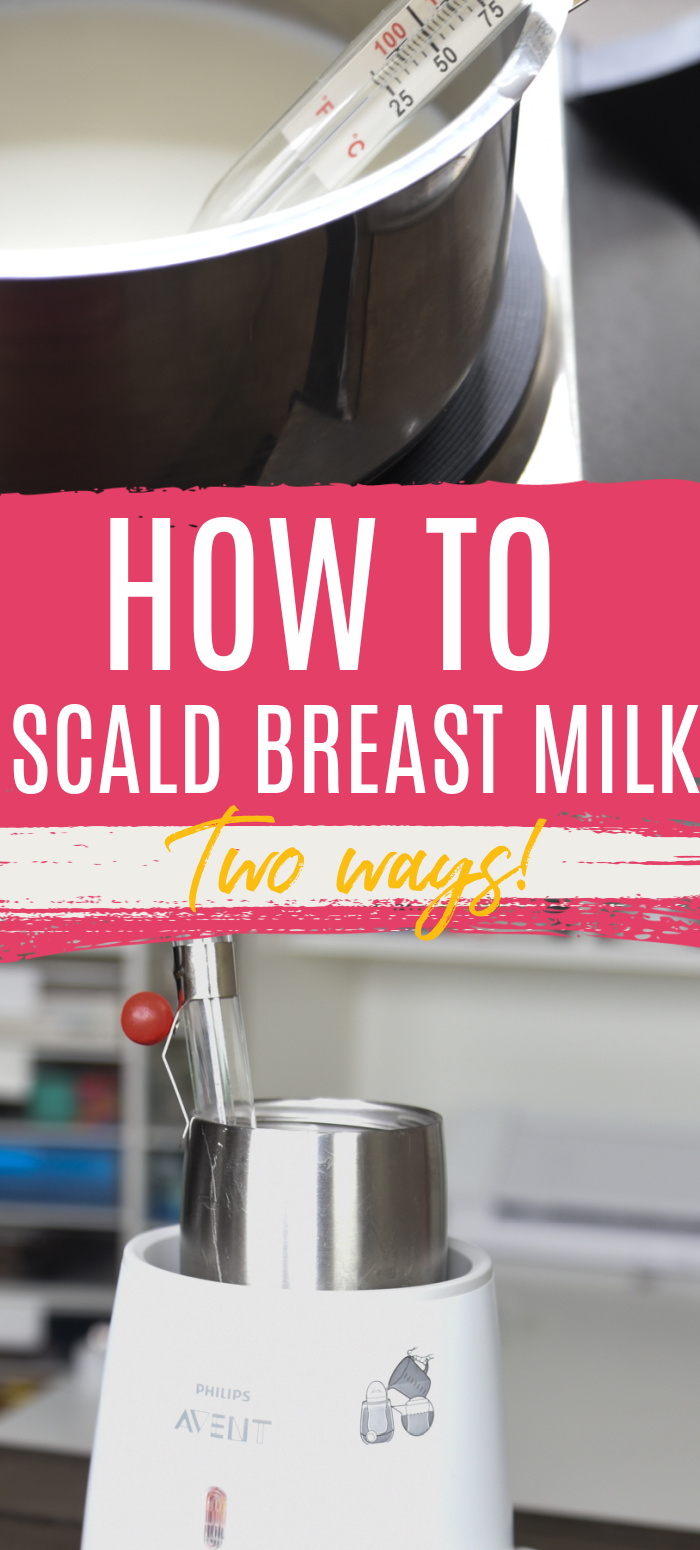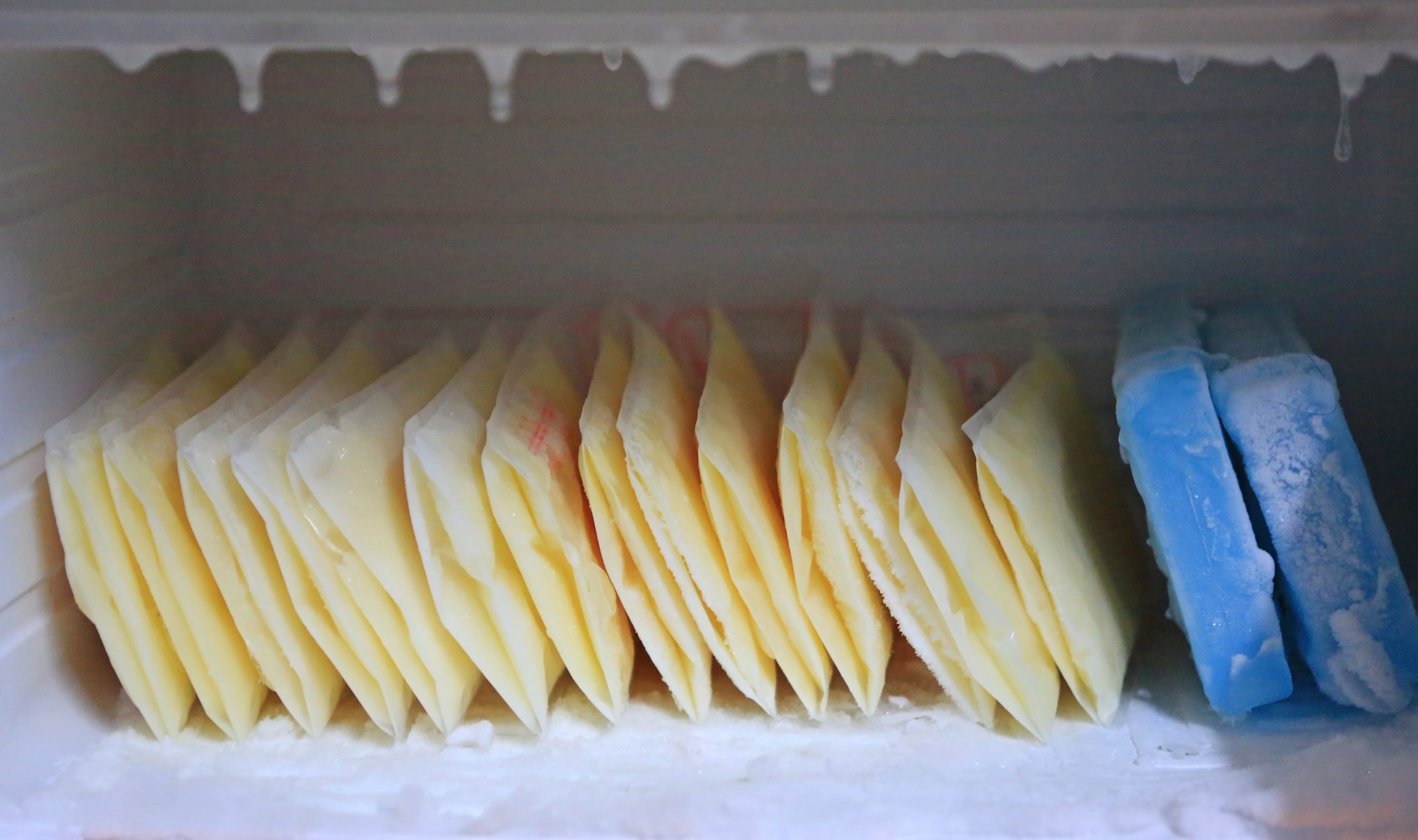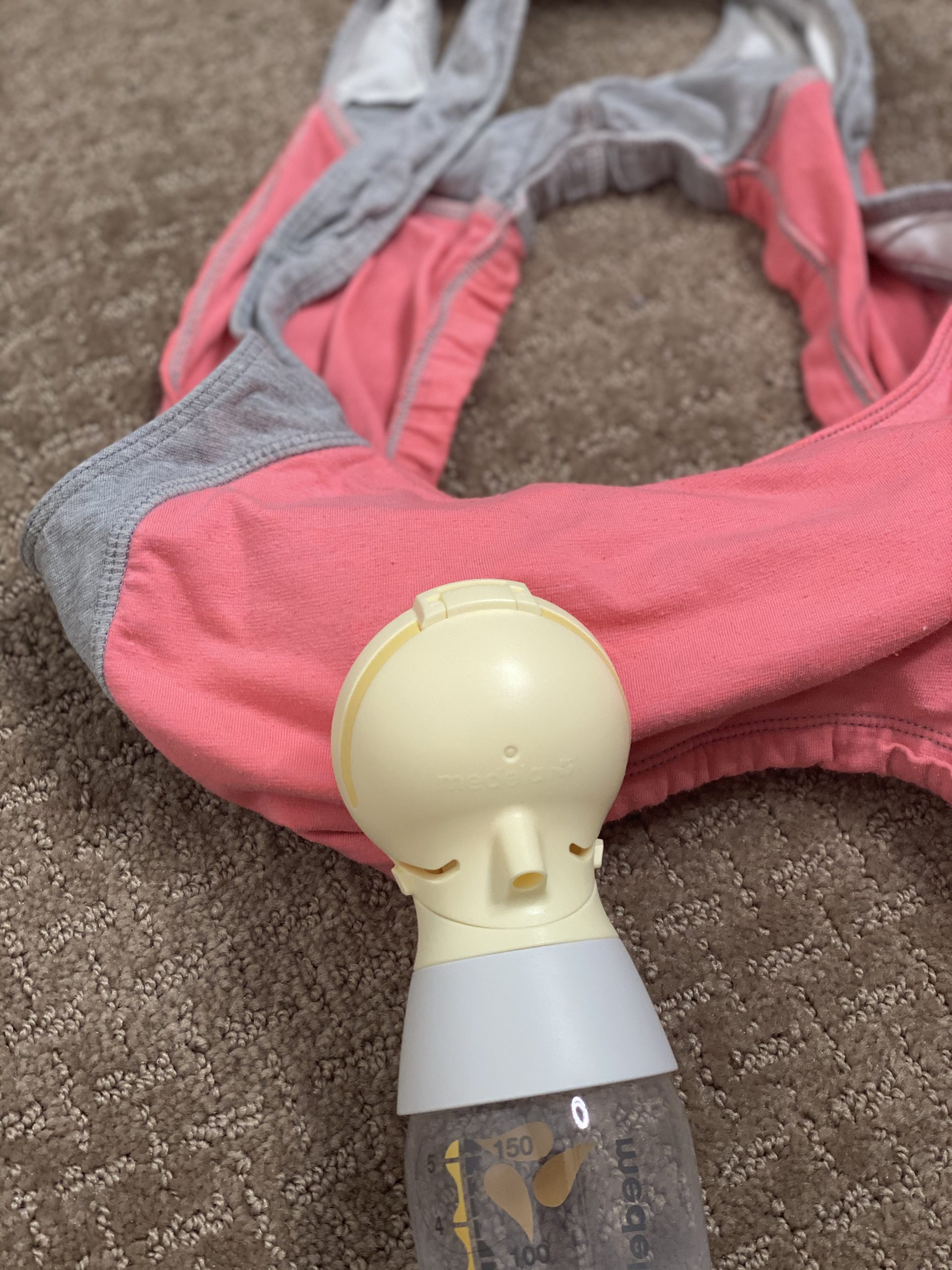Learn from a seasoned dairy-free mom about how to navigate being dairy free while breastfeeding. Read about her journey and find out her favorite products to help you make the swap easier.
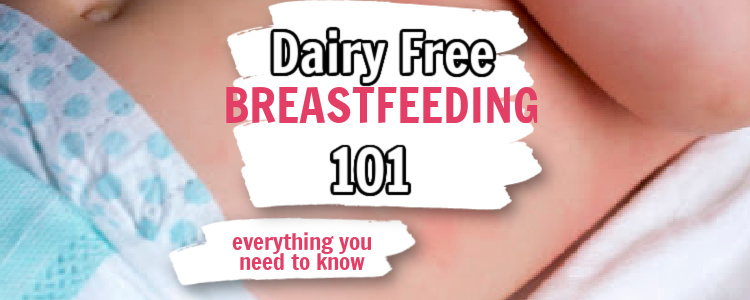
Hello and greetings. My name is Megan Lavin, and I blog over at AllergyAwesomeness.com, and I’m so excited to share my best dairy-free breastfeeding tips with you.
I’ve been cooking dairy-free for almost a decade and had to go dairy-free while breastfeeding both of my boys, so I understand what a transition it can be. Let me help you!
Table of contents
Table of contents
- My Milk-free Journey
- How common are dairy problems in infants?
- Should I Cut Dairy While Breastfeeding?
- How Long Does it Take for Dairy to Get Out of Your Breast Milk ?
- Symptoms of a dairy allergy/sensitivity
- What to do with previously pumped milk?
- Can I just go lactose free?
- Understanding labels
- Going Straight to the source
- Dairy Sources
- There is hope
- Best Dairy Free Products
- Where to buy dairy free foods
- How common are dairy problems in infants?
- Be patient
- Dairy Free Breastfeeding Snacks
- Dairy Free Breastfeeding Meal Plan
- Is going dairy free worth it?
- More Supprot
My Milk-free Journey

After having my first baby, we started noticing that he’d get a red rash on his cheeks after feedings. When I asked my pediatrician about it, she said it was probably something I was consuming, since I was his only source of food, and that I should try an elimination diet to see if I could pinpoint what was bothering him.
Each pediatrician may have their own way of doing things, so be sure to ask your own doctor.
I took out all of the possible culprits for two weeks to make sure my system was cleaned out. Then, I added things back in, one at a time.
During each re-introduction, I’d eat the food every day for three days to really give both of our bodies a chance to have a clear cut reaction.
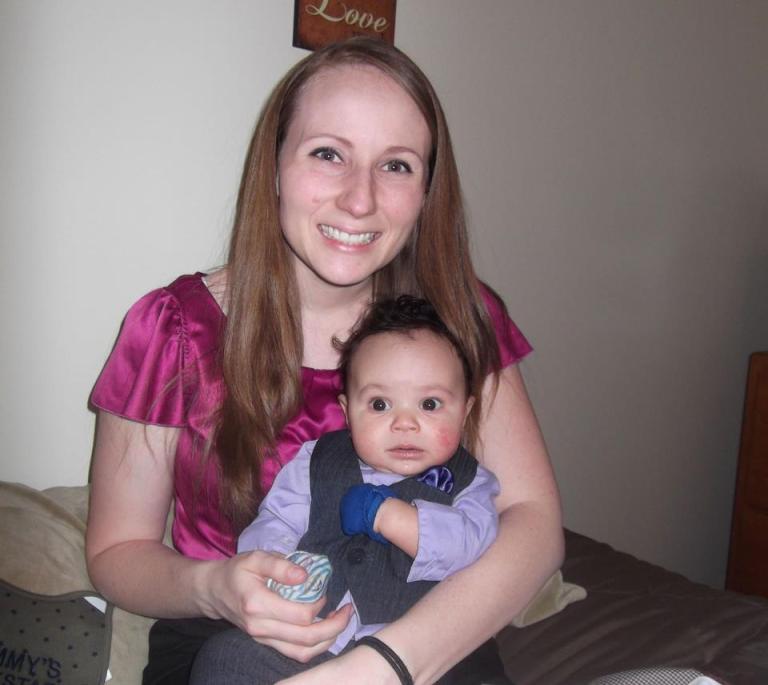
If I noticed no reactions or negative signs, I’d consider that food safe and allow it to stay in my diet. If I noticed a rash, or digestive problems for my son, I’d consider that a fail.
Keeping a food journal was helpful too. Letting your child’s pediatrician know the results and how you plan to move forward is important, so they can be in the loop.
One of the worst culprits for my oldest was actually soy. And now, he drinks soy milk constantly.
So, don’t let the fear of them showing a reaction as an infant make you think this will be a lifelong journey.
Sometimes it’s just an immature tummy that we want to help nurture for a bit without upsetting it. That’s why it’s good to keep a pediatrician in the loop, so that way they can help advise you when and how to re-introduce.
How common are dairy problems in infants?
If I had a nickel for every friend, or friend of a friend that all of the sudden has to go dairy free because they had a baby I’d be rich. It’s far more common than you think.
According to Paedsportal, about 2-3% of infants suffer from milk troubles. And, if you’ve never had to read a label or give a second thought to what you’re having to eat, it can come as a real shock and time consumer.
Milk can be hidden in everything and anything. It is synonymous with the American diet. Learning to spot it on a label can be tricky and confusing at first.
Should I Cut Dairy While Breastfeeding?
As mentioned above, about 2-3% of infants have trouble with dairy while breastfeeding. The vast majority of mothers do not need to cut dairy out – and you don’t need to start breastfeeding out by cutting out dairy.
If you notice that your baby is having signs of a problem with something in your breast milk, that is when you’ll want to start a food diary and work with your doctor and a registered dietician to determine if there is a problem and if dairy should be removed temporarily.
If your child has a dairy allergy, you need to make sure you remove all sources of dairy. If they only seem to be sensitive, some moms are able to get away with just cutting out major sources of dairy (such as milk, cheese, yogurt, ice cream, etc.)
Keep in mind that many infants who have a dairy protein allergy have a soy protein allergy as well.
How Long Does it Take for Dairy to Get Out of Your Breast Milk ?
It can take anywhere from 10 days to three weeks for dairy to totally get out of your system, thus, your breast milk.
However, the vast majority of mothers will be able to tell if a difference is being made within a week or less.
What are symptoms of a dairy sensitivity or allergy in an infant?
These can vary from child to child, but some of the common ones include:
- Colic-like symptoms
- Eczema
- Blood diarrhea
- Blood in stool
- Constipation
- Hives
- Chronic stuffy nose
- Vomiting
- Wheezing
What to do with previously pumped milk?
If your child cannot tolerate your breast milk when there is dairy in it, then you need to make sure not to give that milk.
This can be frustrating, especially if you have pumped a lot of milk. I would definitely not throw it away – you could use it for soap/baths (if your baby doesn’t have a contact allergy to it) or donate to a milk bank or other mother.
While this won’t use a lot of milk, you could get some breast milk jewelery made. If you want to make it yourself, you can get a DIY kit from Lackto for 10% off with code TBM1.
Can I just go lactose free?
If your child truly has a dairy issue, you really can’t just go lactose free. It’s extremely rare for an infant to have a lactose intolerance (dairy is much more common) – your breast milk has lactose in it, even!
So no, you can’t just cut out lactose – it’s more often the dairy protein itself that babies have trouble with.
Understanding labels while going dairy free
In the United States, there is the Food Allergen Labeling Consumer Protection Act (FALCPA). It really helps to read up about this, so that you know what is required of food companies to list, and what is not.
Unfortunately, there are some grey areas in the law, so it’s important that you don’t just look for the bolded statements at the bottom, but that you read through the entire list of ingredients as well.
Companies are not required to list a “contains” statement at the bottom, so read thoroughly and carefully. I find it helpful to read it twice to be sure. Once when you’re buying at the store, and once again before using it at home.
A helpful article on this is by: KidsWithFoodAllergies.org.
Going straight to the source for dairy free information
While you’re learning to read labels, and if in doubt, it never hurts to call companies. I know it may seem odd at first, but they are VERY used to these kind of calls.
Almost all products have a 1-800 number on their packaging, and if not, every website has a “contact us” form or phone number. I’ve had to call more times than I can count, and unless it’s a new or very small company, they are prepared with statements explaining their ingredients when you call.
Dairy Sources
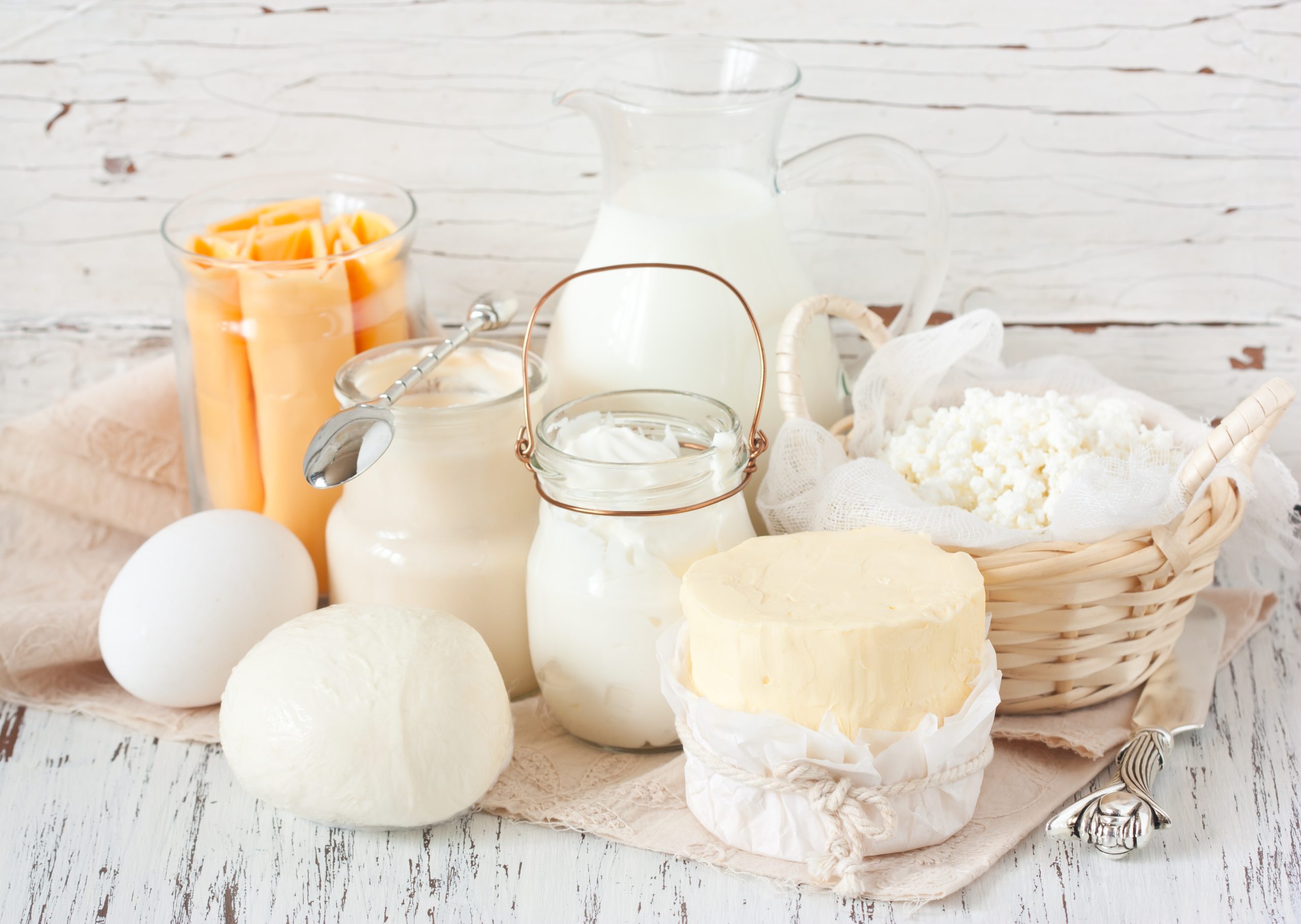
Since milk is such a popular product, it has many names, derivatives and uses. As mentioned earlier, it’s important to be a savvy label reader.
Be sure to either memorize, keep this up on a tab in your phone’s browser, or print this list to take with you when shopping. This list is taken from FARE, as I trust their compilation the most:
- Butter, butter fat, butter oil, butter acid, butter ester(s)
- Buttermilk
- Casein
- Casein hydrolysate
- Caseinates (in all forms)
- Cheese
- Cottage cheese
- Cream
- Curds
- Custard
- Diacetyl
- Ghee
- Half-and-half
- Lactalbumin, lactalbumin phosphate
- Lactoferrin
- Lactose
- Lactulose
- Milk (in all forms including condensed, derivative, dry, evaporated, goat’s milk and milk from other animals, low-fat, malted, milkfat, non-fat, powder, protein, skimmed, solids, whole)
- Milk protein hydrolysate
- Pudding
- Recaldent(R)
- Rennet casein
- Sour cream, sour cream solids
- Sour milk solids
- Tagatose
- Whey (in all forms)
- Whey protein hydrolysate
- Yogurt
Their list also has a “sometimes contains” list and a “does not contain list” so be sure to check those too. I find their extra lists helpful, since sometimes a word may look like it has milk, because it has the word “lactate” in it, but in reality, it does not.
If you would like a free printable of the ingredients below, you can get it by clicking the button below:
[purchase_link id=”2842″ text=”Purchase” style=”button” color=”blue”]
There is hope!
Fortunately, and unfortunately, avoiding milk is becoming more and more common. Avoiding milk is often needed in multiple diets, like Crohn’s, those with a true food allergy, those who are vegan, and others wanting to avoid it for other reasons.
Now, more than ever, there are more non-dairy options than ever before. You may find that this is pushing you outside your comfort zone will allow you to try new things and find new tastes you didn’t know you liked.
Before, you used to have to venture to a Whole Foods, but now, even basic stores like Walmart are carrying more and more dairy-free options.
What are the best dairy free products for breastfeeding moms?
OK. Now that you have a basic understanding of going dairy free, let’s get to the practical side. What on earth do you eat?
When in doubt, stick to basics. Meat, grain, veggies and fruit all naturally don’t have dairy in them. Eating whole foods in your diet is not only good for you, but good for baby!
But, let’s be honest, sometimes you’re exhausted from taking care of a baby and you want some easy, store-bought convenience foods. Here are a list of my favorite product swaps, and none of them are sponsored, just tried and true.
Before we get to naming specific products…REMEMBER…never take the Internet’s word as gospel. Companies change their recipes all the time. Something could have changed since the time of this posting, so, always read and re-read anything you buy for yourself. Only you can keep you safe.
- Butter: Earth Balance (they have both a spreadable kind and sticks for baking)
- Whipped topping: CocoWhip by SoDelicious
- Ice Cream: So Delicious & Nada Moo
- Yogurt: So Delicious and Silk
- Milk: I prefer rice milk. It is thin, but it has the least amount of after taste. If you can stomach the strong after taste of nuts, there are also lots of nut milks out there–almond, cashew and coconut.
- Cream cheese: Tofutti and Go Veggie
- Sour cream: Tofutti
- Cheese: Daiya mozzarella (sorry–have not yet found a dairy free cheddar cheese that I like)
- Heavy cream: A can of full fat coconut milk or coconut cream (found in the Asian isle) can replace heavy whipping cream in almost any recipe
- Chocolate/chocolate chips: Enjoy Life
Where to Buy Dairy Free Foods?
Thankfully, there are many dairy free foods available at your favorite grocery store. However, for more variety and options, you may need to go to a “healthier” store, such as Sprouts, Whole Food, or Natural Grocers.
If you are looking for a particular brand, many websites have a “product finder” on their website so you can figure out where you need to go rather than running around town.
Many items are available on Amazon or online, but they can be more expensive than buying them online.
Thrive Market is a great online market for healthier and organic foods – many of which are dairy free, as well as free of other allergens! It does have a membership fee (as low as $5 a month), but for some, the convenience of having harder-to-find products shipped straight to their front door is appealing.
You can get a free 30 day trial to see if it has the products you want to buy.
Be patient with this dairy free breastfeeding journey
You have a lot on your plate. If you and your doctor both feel this is what’s best for your baby, don’t expect to get it 100% all of the time.
There were definitely some oops moments, when I’d eat something I shouldn’t have before remembering. It’s easy to get down on yourself. While your baby may be uncomfortable for a few days, it won’t be life and death, and you will have learned and will move on the wiser next time.
Checking a label, or asking before every single bite is a new habit to get into, and one that takes patience and practice. You will get this and you will be stronger for doing it.
Dairy Free Breastfeeding Snacks
Store bought snack ideas
Here are my top-5 dairy free snacks to enjoy that require zero cooking:
- Tortilla chips and guacamole, hummus or salsa
- Fruit leather
- Apple Cinnamon Rice Cakes
- Fruit and veggies
- Jerky
Store bought treats
The easiest answer to this is, is stay away from chocolate. Sorry–no more Hershey bars or Snickers. Almost all store-bought chocolate has milk in it (minus the one exception I listed below). So, stick to fruity candies and you’ll almost always win. Here are five popular dairy-free treats:
There are a lot of dairy free ice cream brands out there these days. You may want to experiment with a small container if you see them on sale to see which one you like the most. Fruity sorbets and popsicles are a great dairy free option as well.
Homemade snack recipes
All of my 200+ recipes on Allergy Awesomeness are all dairy free. As I mentioned, my son ended up getting a true dairy allergy around 11 months old, so this has become a way of life for us.
Unfortunately, he also has several other allergies including: wheat, eggs, peanuts and tree nuts, so all of my recipes avoid those as well.
If you’re ever wanting to try some of my allergy friendly recipes, and don’t need them to be gluten-free, you can always swap back in regular flour 1:1, and omit the xanthan gum (a specialty ingredient needed in gluten-free baking.)
Here are a few of my favorite dairy-free snack recipes, which are especially great for a breastfeeding mom who gets hungry and needs some good dairy-free fuel. Seriously, am I the only one who was constantly hungry?
Here is a dairy free lactation cookie recipe that Katie created.
Dairy Free Breastfeeding Meal Plan
I created a two week dinner plan that’s free of the top-8-allergens (great for when you’re doing that elimination diet) that comes with the recipes and a grocery shopping list.
Although this is not specifically designed for breastfeeding mothers, it has a lot of great recipes.
Katie sells a breastfeeding friendly meal plan that is pretty much dairy free (I think there is just some butter in one of the recipes). Click here for that!
[birdsend form=7740]
And, if you’re an instant pot junkie like I am, I created a cookbook with 60 recipes, all free of the top-8-allergens. So there’s no dairy whatsoever!
Is going dairy free while breastfeeding worth it?
Short answer: absolutely! I had no idea there there are basically three types of formula, and that’s it, no matter the brand. There’s cow’s milk, soy, and then an elemental. (Some people will use goats milk, but it’s not very common or recommended for those under 1.)
While it was a pain to eat dairy free, I was able to still give my sons the benefits of breastfeeding. And, thankfully I didn’t allow myself to dry up, because with my oldest, we tried soy formula and he would projectile vomit every time we gave it to him, so that would have only left us with elemental, which tastes horrible (from what we hear, we never personally tried it) and it’s crazy expensive.
I would have been so sad to have given up on breastfeeding and then to have been stuck with a formula he wouldn’t take and an expensive bill every month.
Besides, breastfeeding may help reduce the chance of food allergies (source), it’s so convenient, and it’s a great bonding experience.
Even though it’s a bit of a pain, after a few weeks, you’ll get into a groove of being dairy free and you’ll find it cheaper and more rewarding, at least for me anyways! And if anything, for most kids, being dairy free has a light at the end of the tunnel, because many grow out of it. Not to mention I lost my baby weight quite easily because cutting out dairy cuts out a lot of calories.
Where to find more tips:
If you need more dairy-free advice, feel free to reach out to me on either of these platforms: Facebookand Instagram. Wishing you the best of luck. You got this!

More Posts You May Enjoy:
- Breastfeeding and Gestational Diabetes: Everything You Need to Know
- High Lipase Breast Milk: Why Your Breast Milk Tastes Gross (and What You Can Do)
- Pacifiers and Breastfed Babies: What All New Parents Need to Know
- 27 Common Breastfeeding Questions – and Answers!
